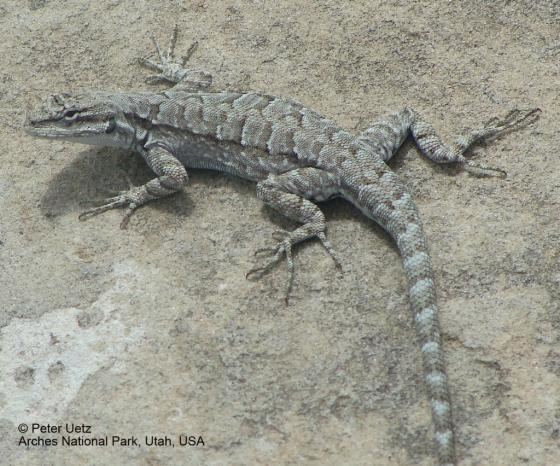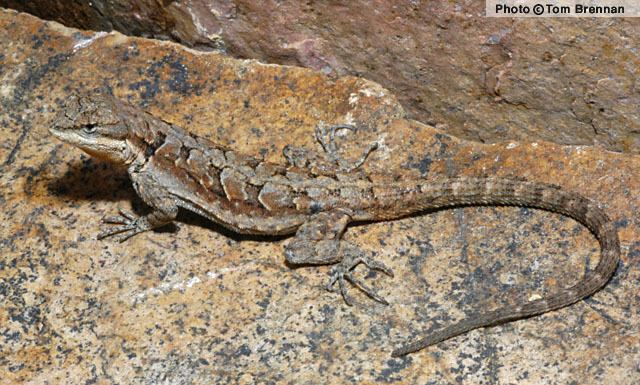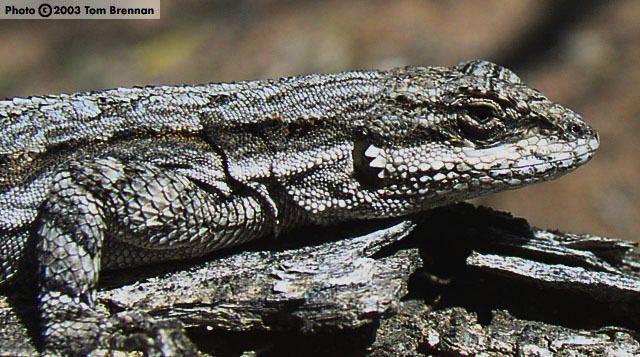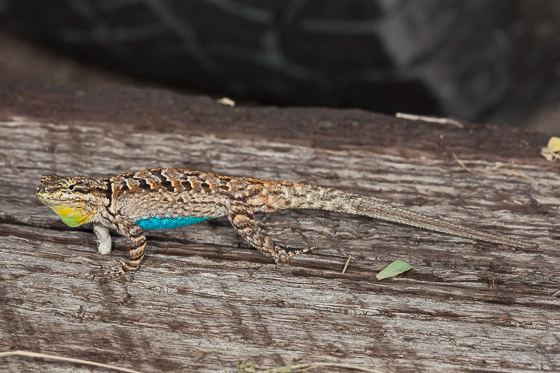Suborder Lacertilia Family Iguanidae Higher classification Urosaurus Order Scaled reptiles | Subphylum Vertebrata Infraorder Iguania Subfamily Phrynosomatinae Phylum Chordata Rank Species | |
 | ||
Similar Urosaurus, Common side‑blotched lizard, Side‑blotched lizard, Urosaurus graciosus, Greater earless lizard | ||
Behavior of two ornate tree lizards urosaurus ornatus
Urosaurus ornatus, commonly known as the ornate tree lizard, is a species of lizard native to the southwestern United States and northwestern Mexico. The species, which formerly was commonly called simply the "tree lizard", has been used to study physiological changes during the fight-or-flight response as related to stress and aggressive competition. Also, its life history and costs of reproduction have been documented in field populations in New Mexico and Arizona. Finally, it has been fairly well studied because it has interesting variation in throat color in males (within a population) that can correlate with different reproductive strategies,
Contents
- Behavior of two ornate tree lizards urosaurus ornatus
- Diet
- Reproduction
- Appearance and throat color variation
- Subspecies
- Geographic range
- References

Diet
The ornate tree lizard feeds on mostly insects and their larvae.
Reproduction

A group consisting of one male and one or more females typically inhabit an area containing one or more large trees, shrubs, or boulders. The male copulates with each female and the female retain eggs about two weeks after mating. In many parts of its range, females may lay more than one clutch of eggs a year.

Territoriality is an important part of reproduction for many males in this species. Males often defend territories by aggressively excluding other males. This aggression can, in part, be enhanced with higher levels of the steroid hormones testosterone and progesterone. Females have home ranges but do not defend territories. When the number of females on a male's territory is experimentally reduced by removing the females, the male is more likely to abandon his territory.

Females also can vary in throat coloration, although this is not as well-studied. When gravid with eggs, females tend to be orange or red. Recent experiments also suggest females have association, and perhaps mating preferences for different male types, and that this female preference varies with the throat color of the female herself, and with the colors of the two males that she was presented.
Appearance and throat color variation
As adults, all males have paired turquoise patches of skin on the abdomen; females lack this abdominal coloration. Male ornate tree lizards are found in a variety of colors. While not all populations contain more than one or two colors, 9 color types have been documented within U. ornatus. A population documented in Verde River, Arizona, has two types of coloration patterns among male tree lizards that account for 45% of all males. The first is characterized by a blue spot in the center of a larger orange patch on the throat fan ("dewlap"). The second is has a solid orange throat fan ("dewlap"). The orange-blue males are more aggressive and defend territories that can include up to four females. The orange males have longer, leaner body types and are much less aggressive. Orange males can be nomadic during dry years, and during rainy years tend to occupy small territories.
Some, such as Stanford professor and biologist Joan Roughgarden, have suggested multiple male genders in this species. Among differently colored male tree lizards, there are different hormonal profiles. On the day a male tree lizard hatches, researchers think that high blood levels of progesterone and then later, as a juvenile, higher testosterone levels will cause him to develop into an orange-blue type; low progesterone and later lower testosterone levels, as a juvenile, may lead the male to develop into an orange type. During dry weather conditions, orange-type males' corticosterone levels increase, which causes testosterone to decrease, leading them to be more likely to leave their territory and become nomadic. Orange-blue males do not have this hormonal response to the weather, and remain in their territories regardless of climatic conditions.
Subspecies
Ten subspecies are recognized as being valid, including the nominotypical subspecies.
Nota bene: A trinomial authority in parentheses indicates that the subspecies was originally described in a genus other than Urosaurus.
Geographic range
United States: California, Nevada, Utah, Colorado, Wyoming, Arizona, New Mexico, and Texas.
Mexico: Sonora, Sinaloa, Chihuahua, and Coahuila.
